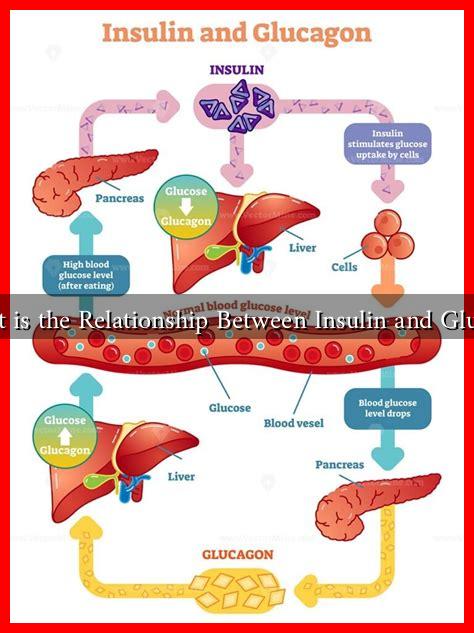-
Table of Contents
What is the Relationship Between Insulin and Glucose?
Understanding the relationship between insulin and glucose is crucial for grasping how our bodies manage energy and maintain metabolic health. Insulin, a hormone produced by the pancreas, plays a pivotal role in regulating blood glucose levels. This article delves into the intricate dynamics between insulin and glucose, exploring their functions, interactions, and implications for health.
The Role of Insulin in the Body
Insulin is a peptide hormone that is essential for glucose metabolism. It is secreted by the beta cells of the pancreas in response to rising blood glucose levels, particularly after meals. The primary functions of insulin include:
- Facilitating Glucose Uptake: Insulin promotes the uptake of glucose by cells, particularly muscle and fat cells, allowing them to use glucose for energy.
- Storing Excess Glucose: When blood glucose levels are high, insulin signals the liver to convert excess glucose into glycogen for storage.
- Inhibiting Gluconeogenesis: Insulin suppresses the production of glucose from non-carbohydrate sources in the liver, helping to lower blood sugar levels.
Glucose: The Body’s Primary Energy Source
Glucose is a simple sugar that serves as a primary energy source for the body’s cells. It is derived from the carbohydrates we consume, and its levels in the bloodstream are tightly regulated. Key points about glucose include:
- Source of Energy: Glucose is vital for cellular respiration, providing energy for various bodily functions.
- Blood Sugar Regulation: Normal blood glucose levels typically range from 70 to 100 mg/dL when fasting.
- Impact of Diet: Foods high in carbohydrates can lead to spikes in blood glucose levels, necessitating insulin release.
The Insulin-Glucose Feedback Loop
The relationship between insulin and glucose is characterized by a feedback loop that maintains homeostasis. When you consume food, particularly carbohydrates, glucose levels rise, prompting the pancreas to release insulin. This process can be broken down into several steps:
- Ingestion of Carbohydrates: Foods like bread, pasta, and sugary snacks are broken down into glucose.
- Increase in Blood Glucose Levels: As glucose enters the bloodstream, blood sugar levels rise.
- Insulin Secretion: The pancreas releases insulin to facilitate glucose uptake by cells.
- Normalization of Blood Sugar: As cells absorb glucose, blood sugar levels decrease, leading to reduced insulin secretion.
Insulin Resistance and Its Implications
Insulin resistance occurs when cells become less responsive to insulin, leading to elevated blood glucose levels. This condition is a precursor to type 2 diabetes and is associated with various health issues, including:
- Obesity: Excess body fat, particularly around the abdomen, is a significant risk factor for insulin resistance.
- Cardiovascular Disease: Insulin resistance is linked to higher risks of heart disease and stroke.
- Metabolic Syndrome: A cluster of conditions, including high blood pressure and abnormal cholesterol levels, often accompanies insulin resistance.
Statistics indicate that approximately 88 million adults in the United States have prediabetes, a condition characterized by insulin resistance. Without intervention, many of these individuals may develop type 2 diabetes within five years (source: CDC).
Conclusion
The relationship between insulin and glucose is fundamental to our understanding of metabolic health. Insulin facilitates the uptake and storage of glucose, ensuring that our bodies have a steady supply of energy. However, when this system is disrupted, as seen in insulin resistance, it can lead to serious health complications. Maintaining a balanced diet, engaging in regular physical activity, and monitoring blood sugar levels are essential strategies for promoting insulin sensitivity and overall health. By understanding this relationship, individuals can take proactive steps to manage their metabolic health and reduce the risk of chronic diseases.

